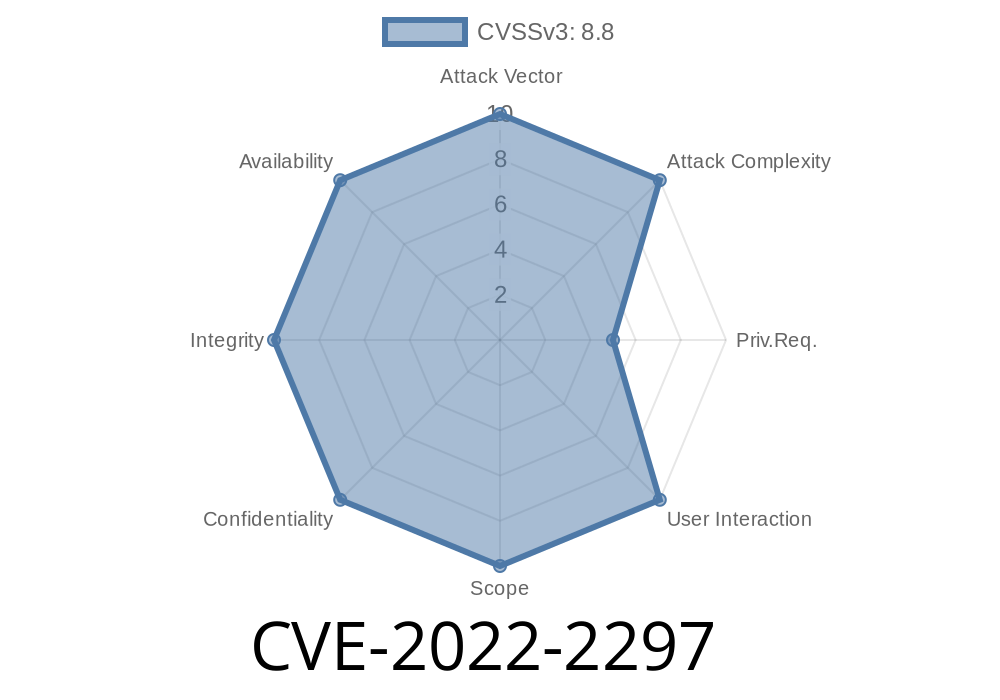A critical vulnerability has been discovered in SourceCodester Clinics Patient Management System 2., which could potentially allow an attacker to manipulate the system through unrestricted file uploads. The affected function is within the file /pms/update_user.php?user_id=1. This vulnerability has been assigned the CVE identifier CVE-2022-2297 and is considered particularly dangerous because it can be launched remotely. The details of this exploit have been disclosed to the public, meaning that attackers may already be utilizing this weakness for malicious purposes.
Exploit Details
The crux of the vulnerability lies in the manipulation of the argument "profile_picture" using an input like "", which can lead to unrestricted file uploads. The improper handling of user-controlled files makes the system vulnerable to attackers, enabling them to upload arbitrary files onto the server or execute malicious code.
Code Snippet
In the file /pms/update_user.php?user_id=1, the vulnerability can be triggered by manipulating the "profile_picture" argument like this:
profile_picture=<?php phpinfo();?>
To exploit this vulnerability, an attacker would insert malicious PHP code like "" as the value for the "profile_picture" argument. This would then cause the targeted server to save the PHP file as a user's profile picture, which could then be executed on the server with the injected code.
Original References
- CVE-2022-2297: https://cve.mitre.org/cgi-bin/cvename.cgi?name=CVE-2022-2297
- SourceCodester Clinics Patient Management System 2.: https://www.sourcecodester.com/php/14726/clinics-patient-management-system-phpmysql.html
- Vulnerability Details and Disclosure Source: https://www.exploit-db.com/exploits/50891
Mitigation
Although there is no official patch for this vulnerability yet, system administrators using SourceCodester Clinics Patient Management System 2. can take several precautions to minimize the risk:
1. Regularly monitor and review server logs for suspicious activities, including attempts to upload or execute files.
2. Restrict user privileges, especially regarding the upload and modification of files on the server, by implementing role-based access control (RBAC).
3. Conduct thorough security audits of web applications and underlying server configurations, taking care to identify potential vulnerabilities.
4. Implement a web application firewall (WAF) to provide additional security and protection for applications that may be vulnerable to attacks.
5. Keep a close watch on official security advisories and patches from SourceCodester and promptly apply any software updates that address this vulnerability.
Conclusion
CVE-2022-2297 poses a significant risk to organizations using SourceCodester Clinics Patient Management System 2. due to its critical severity and the fact that the exploit has already been disclosed to the public. It is essential for administrators to act quickly in mitigating the vulnerability and safeguarding their systems from potential attacks. By following best practices, monitoring server logs, and applying available security updates, administrators can minimize the potential impact of this critical vulnerability.
Timeline
Published on: 07/12/2022 17:15:00 UTC
Last modified on: 07/16/2022 02:39:00 UTC
